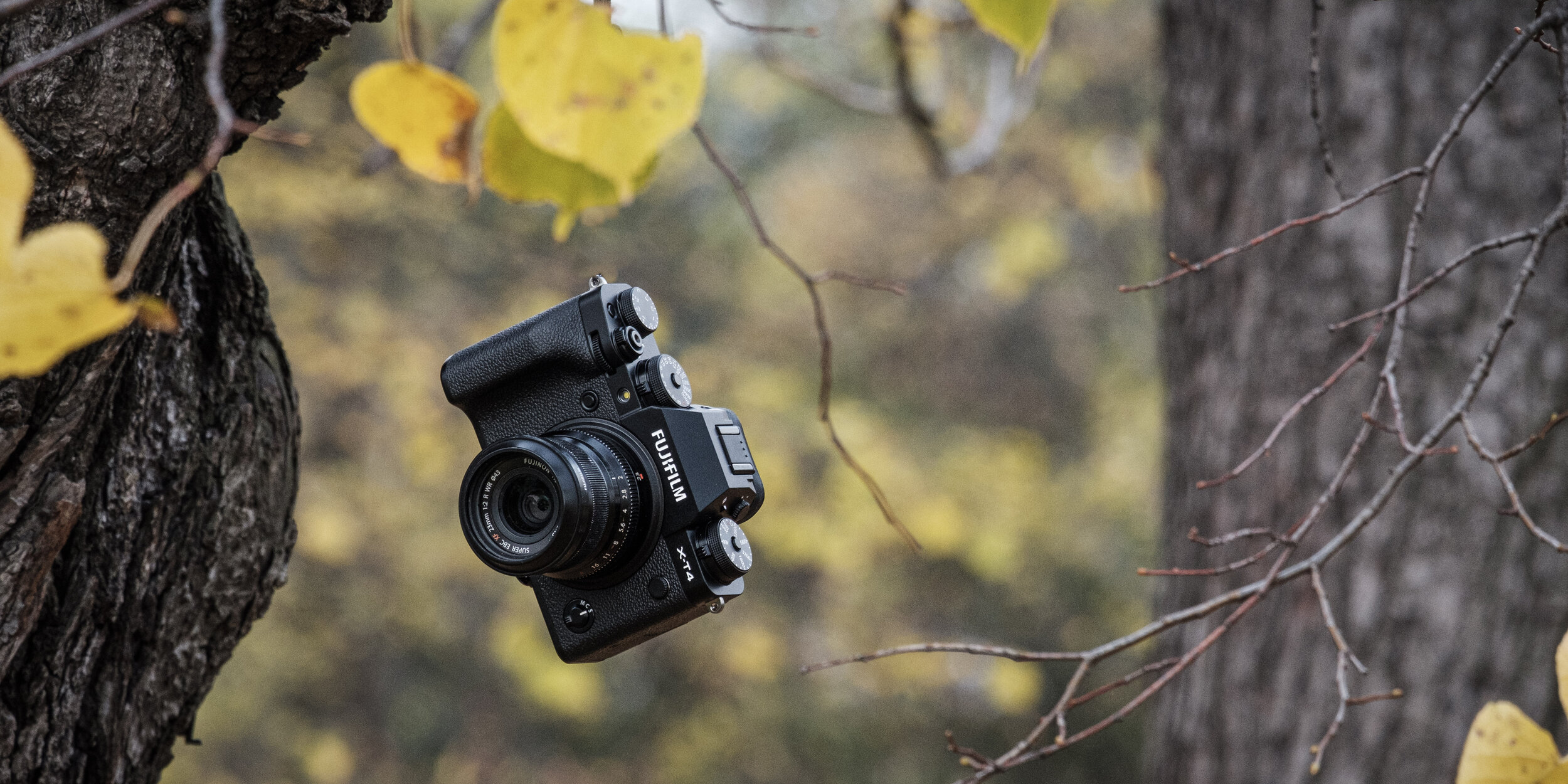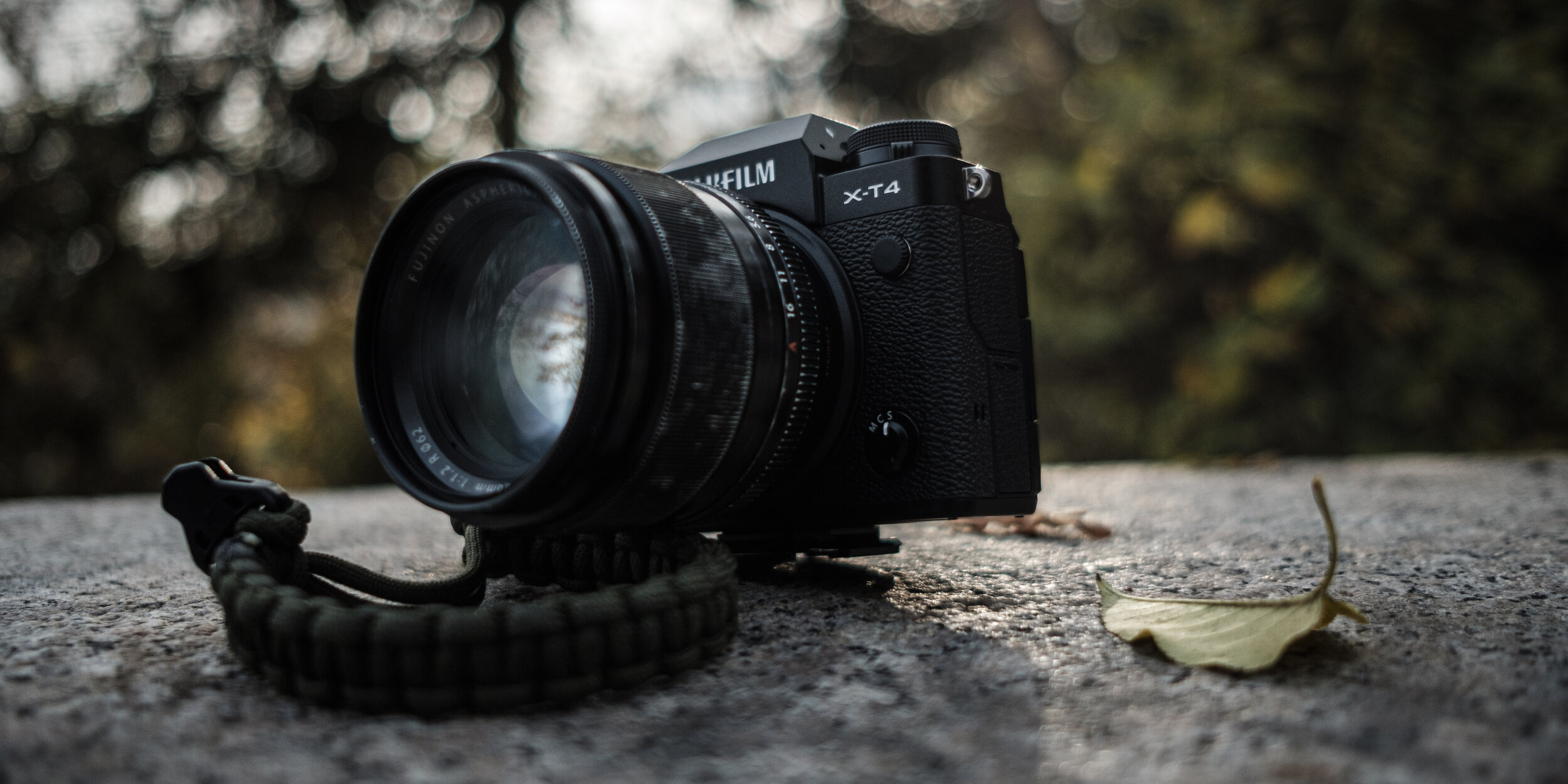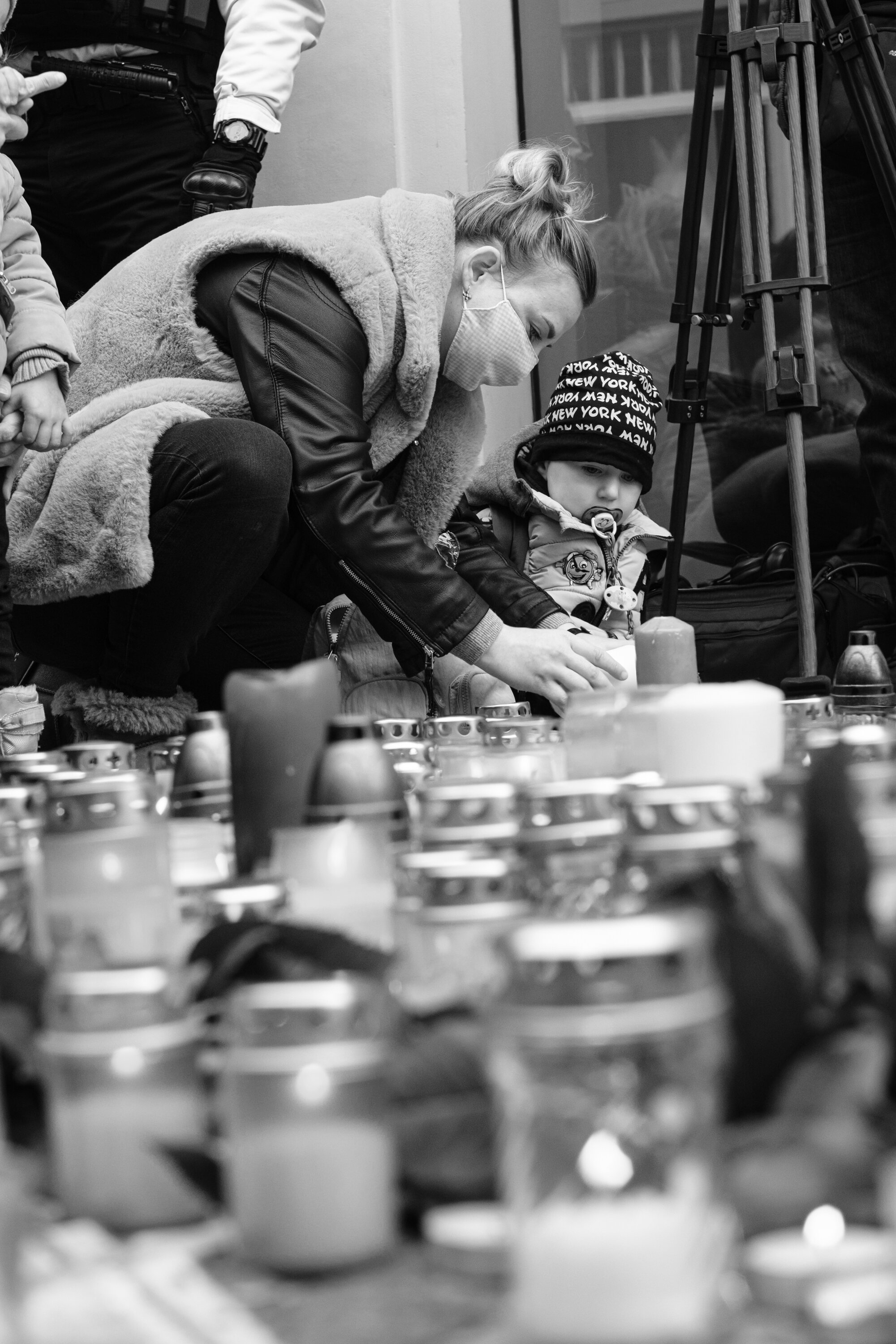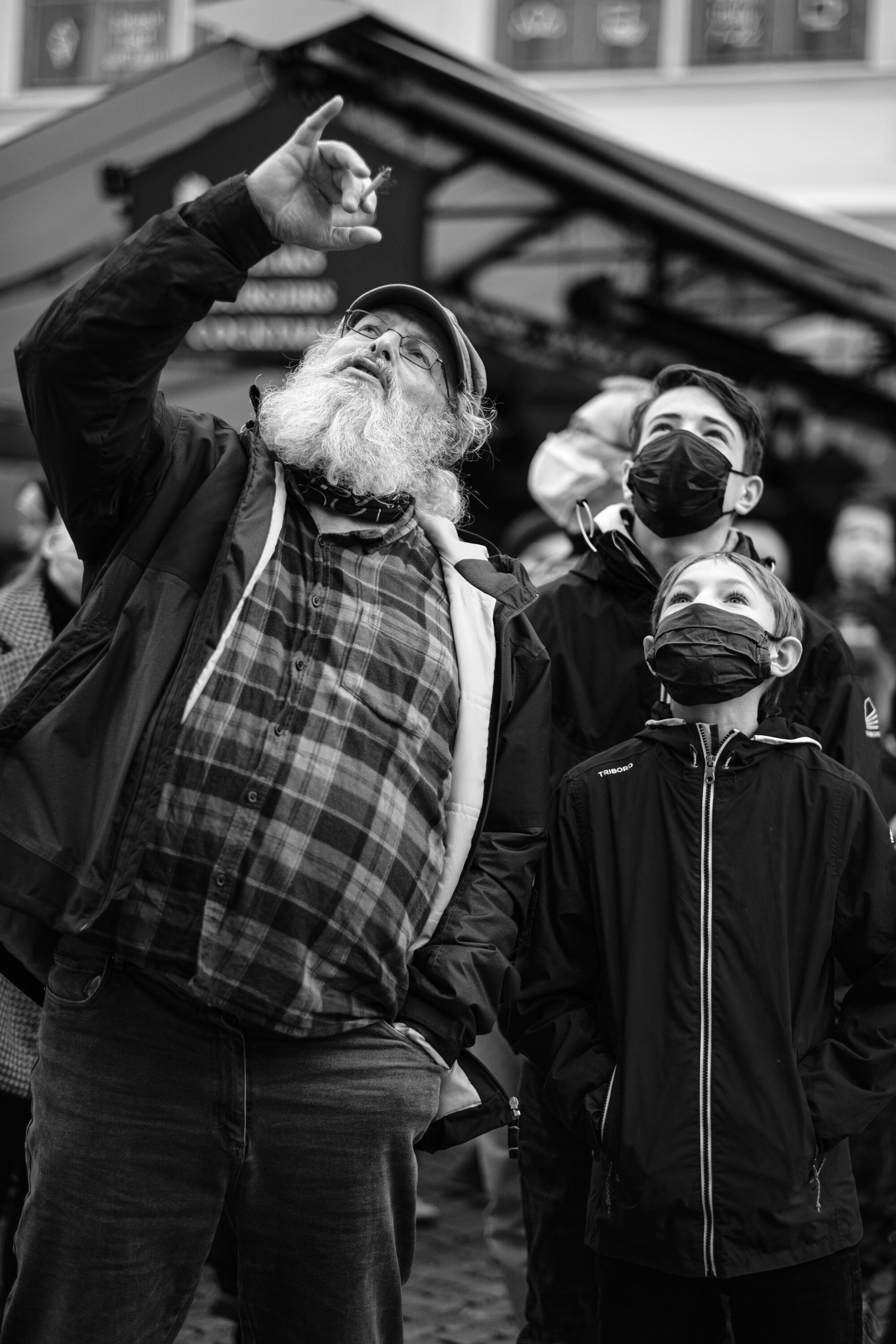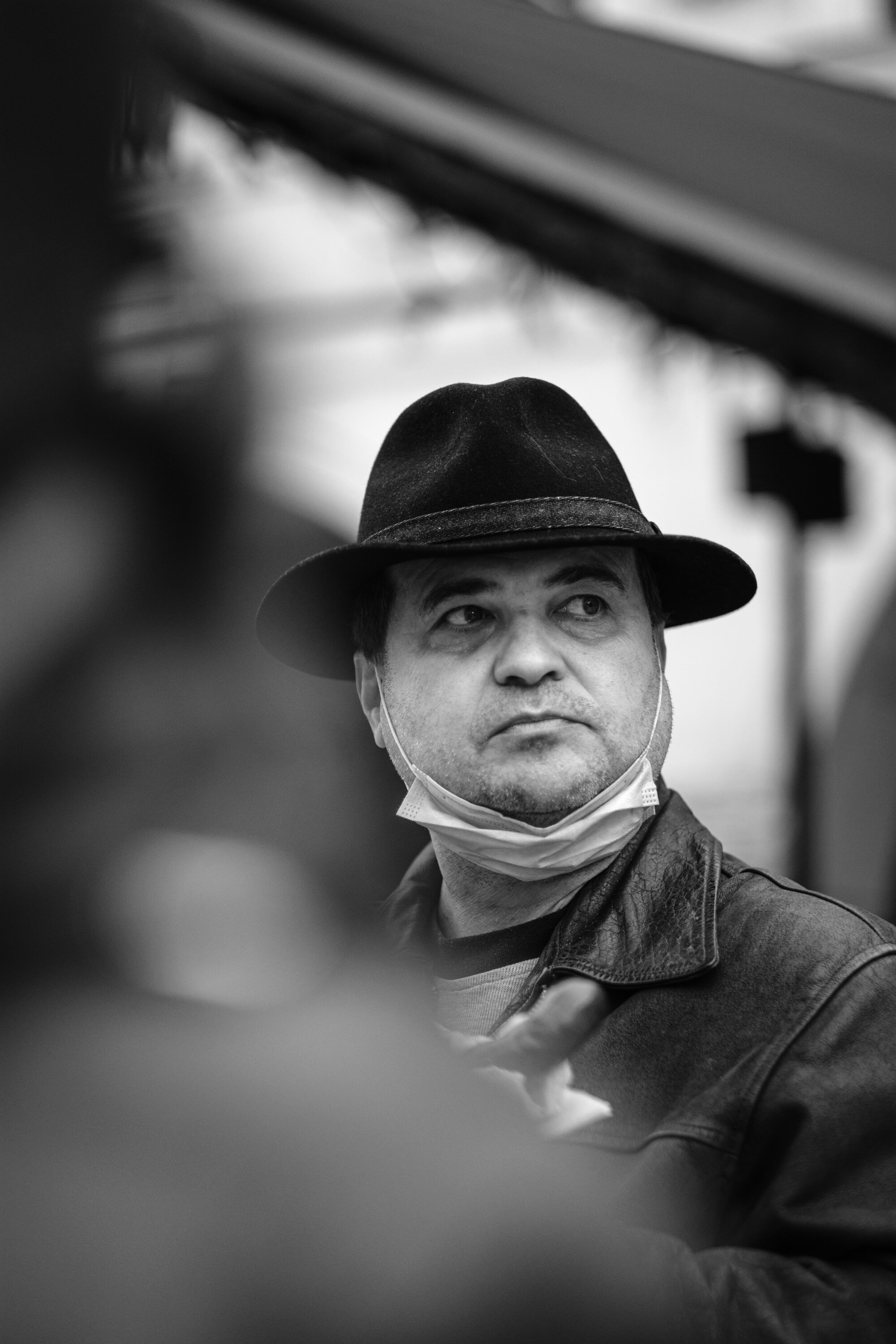It just makes sense - Fujifilm X-T4 review
When Fujifilm came out with the X-T4 not even two years after their incredibly well-received T3 I gotta admit I was a bit surprised. After all, the X-T3 is already an incredibly capable camera. But the longer I’ve been using the new one the more I’ve been realising that it just makes sense. It inherited quite a lot from it’s older sibling. For example, the mechanical/analogue controls, which are a given with today’s Fujifilm cameras, are still here. Like the lovely ISO and shutter speed dials which are of course lockable in any position. A feature first introduced in the amazing X-T2. All the programmable buttons, which let you customise the camera to your exact liking, are back so no more struggling within the menus to change settings all the time like with many other cameras. Once you make it yours there really isn’t anything to distract you from the scenes unfolding on front of your lens.
Weather sealing is also present so you still don’t have to worry about rain, dust nor snow. This is one of the features with which I know I can trust Fujifilm with no worries. My cameras have been tortured through some pretty unhospitable scenarios including rain and snowstorms and they’ve never failed me. The photographs have always come out perfect and there was never any serious hiccup.
Both of the SD card slots are still UHS-II compatible, so there’s no need to buy the new and expensive XQD or CF Express card like many similar models from other brands need these days. Both of these slots can be of course used the same modes. Backup, RAW + Jpeg, or Sequential. Charging is still done internally through a USB-C connector but this is where the first difference from the older X-T3 occurs. Even though the more experienced photographers could squeeze roughly 800-1000 images out of a single charge on the NP-W126S 1211mAh battery, it still wasn’t really enough for many people. Especially video or long exposure shooters so Fujifilm came with a solution. The new battery is called NP-W235 and it can hold up to 2200mAh of juice for the X-T4 which is almost double of what the older model was capable of.
The viewfinder has also stayed the same and why wouldn’t it? The resolution combined with the 100 fps makes it a joy to look through. There really isn’t anything as reassuring as seeing your image before you even take the shot. I don’t think I can ever return to an optical viewfinder after seeing what the electronic ones can do.
The 26.1-megapixel X-Trans IV BSI CMOS sensor with its 2 million phase detect focusing pixels is back and it’s still powered by the same X-Processor 4, which allows for truly impressive autofocus including the nowadays widespread face and eye tracking even at some pretty low light situations but there some new things in this camera on top of that. First is the new autofocus algorithm allowing for a roughly 3 times faster and more accurate AF than what the X-T3 could do (The X-T3 has been recently updated to firmware version 4.0 which brought the X-T4 AF system to it). The next change isn’t just a software upgrade though. It has more of a physical character.
I’m of course talking about the new in-body image stabilisation (IBIS). It’s a newer and better system than what the older X-H1 was working with. Instead of being attached to springs, the sensor is suspended in a magnetic field which allows it to absorb camera shake even better. Combined with the new gyroscope all of this allows the camera to take images at times between 5 to 6 stops longer than without IBIS depending on the lens you use. And Fujifilm is definitely putting its money where its mouth is. I’ve been able to do a 1” long exposure handheld and the image still came out sharp.
The entire shutter mechanism had to be reworked to accommodate the new IBIS system which is a good thing as it’s now much quieter and softer. It can also shoot up to 15 still frames per second whilst focusing and with no viewfinder blackout. . The electronic shutter can go even faster at 20 frames per second (30 if you’re ok with a 1.25x crop). All of these changes like the IBIS and the battery take a bit more space so the body of the camera is slightly larger and bulkier than its predecessor but it’s not much of a jump. It still handles very nicely and still looks absolutely amazing just like its older siblings.
The gorgeous jpegs are back along with the well-known film simulations from the good old Provia, Velvia, Astia, Acros and Classic Chrome to the newer Eterna or the absolutely stunning Classic Negative designed to look like Fujifilm Superia 400 film stock. All of those can be also individually tweaked to create your own jpeg looks which has allowed people to create some wonderful recipes not originally included by the manufacturer. I’ve managed to find recipes for a beautiful Kodachrome simulation as well as Kodak Portra 400 or Tri-X.
The fourth generation of the X-Trans sensor which has been used by Fujifilm since the X-T3 and X-Pro3 times is making a return and it’s bringing that wonderful image output with it. ISO is natively between 160 and 12 800 but there are two individual amplifiers between the sensor and the processor. The first one is at the lowest 160 level but the second one sits at ISO 640. This means you’re getting lower noise levels at ISO 800 than at ISO 500 because the image doesn’t have to be amplified as much. This also gives you better dynamic range and cleaner skin tones. Thanks to the sensor being ISO invariant though you can easily photograph at the lower ISO levels and then just bring the exposure back up in post. The noise levels are practically the same but you’re not losing the details in otherwise blown highlights. This is perfect for high contrast scenes.
An underexposed image to keep the highlight details that was brought up roughly 4 to 5 stops in the shadows
I wouldn’t really call these artefacts noise though. Thanks to the X-Trans matrix combined with the processor the high ISO looks grainy rather than noisy. Almost as if the photographs were exposed on a traditional analogue film. On top of that, the noise is mostly luminance noise and not colour noise so you’re not getting the unpleasant random colour dots and blotches like most Bayer sensors do. It looks great in black and white and even better in print.
A debut feature for Fujifilm is the fully articulating screen which you can no turn towards you if you’re taking a selfie or recording yourself. It can also be fully hidden from view to protect its glass. It can be harder for someone with big hands to open it though. I struggled to get the display out with my thumbs as the opening is pretty small. Personally, I prefer the tilting system of the X-T2 and X-T3 thanks to its stronger durability but I can still see the benefits of this screen. Especially for filmmakers.
Speaking of video. It seems like it’s been at the forefront of the X-T4’s design. The dedicated Still or Movie mode dial underneath the shutter speed wheel is a proof of that. There is no longer a need to change all of your colour, IQ and AF settings if you’re switching between the two. Stills and video have their own settings that are kept for you when you come back to each mode. The camera is capable of recording All-Intra 10bit 4:2:0 DCI 17:9 4K internally up to 400mbps or at a lower quality at 60fps. It can also record FullHD 1080p video up to 240fps which allows for 10x slow-motion footage. Face/eye detect autofocus is still available just like in stills same as all of the lovely film simulations. The more demanding video makers can record F-Log directly to the SD card if they need the extra dynamic range. The HDMI is also capable of outputting 10bit 4:2:2 4K video for even more colour information.
I believe that the X-T4 has definitely been a good step forward for Fujifilm and a great choice for anyone out there needing a camera capable of working under any conditions with a great image output, speed and comfortable controls. It’s a perfect piece of kit for a wedding photographer, photojournalist, sports, wildlife, and landscape photographer. Street photographers as well as studio lovers are certainly going to love it as well.
I’m looking forward to what’s coming next because it can’t get much better. Well… Except maybe one thing. Please Fujifilm, let us transfer RAWs using the phone app. Please!
Here are some images I took using the X-T4 in the last few days:
